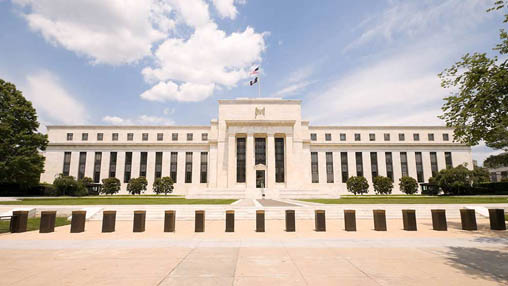
Earn cash back
after close!
With Home Connect, you could earn $350 to $9,500 cash back after close.
January 26, 2022 — The U.S. Federal Reserve once again announced that the federal funds rate would remain at near-zero levels.* This exact decision has been repeated at every single meeting of the Federal Open Market Committee (FOMC) since March 15, 2020, when the nation's central bank first announced it would lower rates to the astounding range of 0.00% - 0.25%. This historically low range for the rates at which banks can borrow money from one another was put in place in response to the coronavirus pandemic and its grip on economies worldwide, in an effort to foster a healthy economic recovery.
Rumors and projections as to when the first inevitable rate hike will occur have been circling for months, with many now guessing that the day that happens could potentially be arriving as early as March or June of this year.
But what does this all mean for you and your monthly mortgage payment right now? Let's find out.
Why does the Federal Reserve lower interest rates?
The Federal Reserve System (The Fed) is the central bank of the United States, which regulates financial institutions. In response to timely economic conditions, the Fed decreases the benchmark interest rate (the base rate financial institutions use when lending) to encourage borrowing and lending among banks, businesses and consumers.
The Fed's rate changes have a broad impact on the economy, which eventually lead to a general decrease or increase in interest rates over time, particularly for new credit.
What causes the Fed's rate decisions?
There can be several factors or national economic events that come into play, but essentially the main influences on the Fed's decisions are the employment rate, inflation and any resulting projections about the long-term health of the economy. While one can always try to make an educated guess, the one standard we can rely on is that we never know what the Fed is going to decide is best for the economy at any given time and how rates may fluctuate as a result.
Should I refinance right now?
When the federal lending rate decreases, your monthly payment could temporarily decrease if you have a HELOC, ARM, or another variable-rate loan, and your variable loan has reached beyond its initial fixed introductory period. Conversely in these cases, when rates start climbing again, your payments could increase.
If you have a fixed-rate mortgage, your rate stays the same for the life of your loan, regardless of the length of your term (e.g., 15 or 30 years) or fluctuations in the federal lending rate. With these types of loans, in order to lower your rate, you would refinance into a new home loan. Depending on the loan type you choose, this can often be done with fewer requirements and paperwork than you experienced when you bought your home. And with Pennymac as your lender, you would also have the option of keeping your loan term the same, allowing you to save on interest and keep your original loan payoff date.
Whether you have a fixed-rate or variable mortgage right now, it's important to understand that 30-year fixed mortgage rates are at historic lows. Consider refinancing if any of the following factors apply to you:
- Current mortgage rates are at least 0.5% lower than your current fixed rate.
- You have a variable or adjustable-rate mortgage, you're planning on staying in your house for several years, and you'd like to lock in a lower-interest fixed-rate loan.
- You'd like to shorten the life of your loan — for example, move from a 30-year fixed mortgage into a 15-year fixed rate mortgage.
- Your home value has risen, and current, low interest rates could help you draw responsibly on equity with cash-out refinancing.
- Your refinanced interest rate is much lower than your interest rate on credit cards or other debt. Cash-out refinancing can be used to pay off multiple debts, as part of a balanced financial plan.
Of course, there are many steps to the refinancing process — it doesn't happen overnight. You'll also need good credit to apply for refinancing.
How do falling interest rates impact my monthly mortgage payment?
Lower mortgage interest rates make owning a home less expensive by reducing your monthly payment, which, in most cases, is composed of principal, interest, taxes and insurance. You'll also save money over the life of your loan.
For example, if you have a 30-year fixed loan of $100,000 with 6% interest, you'll pay around $600 a month. If refinancing lowers your rate to 3%, you would pay around $422 a month — that's an extra $178 in your pocket every month (or $2,136 per year) that could go toward other things you want to spend your hard-earned cash on.**
Rates also influence how much house you can buy. Decreasing interest rates can make that new home you've been pining after (the one just outside of your price range) suddenly affordable. The inverse is true, too — what you could afford at a 3% interest rate may become impossible at 6%. But luckily for current homebuyers, today's low rates have allowed for many to take advantage of the resulting increase in buying power and opt for a much-needed larger space, particularly with the prevailing rise in homeschooling and working from home.
How high or low can mortgage interest rates go?
To give further perspective into just how low current rates stand, looking back to 1981 when the average cost of a home in the U.S. was just $82,000, mortgage rates skyrocketed as high as 18.45% while the Fed attempted to slow down rampant inflation. In contrast, in 2012 when the U.S. economy was struggling to recover from the Great Recession, rates had dropped to 3.35%, an astounding low at the time.***
Jumping back to current times, mortgage rates have been consistently hitting dramatic and historic lows since the Fed lowered the benchmark rate in March of 2020. For example, on August 5, 2021 the average 30-year fixed-rate mortgage dropped to a record-breaking 2.77%, as shown on Freddie Mac's 2020 Primary Mortgage Market Survey.****
While it’s impossible to know precisely when the Fed will make their move with the first post-pandemic rate increase, we can rest assured that the day will come, and it might just be right around the corner. For the time being, rates remain low, continuing to save homeowners thousands of dollars in interest.
While interest rates are still low, you may want to consider how you can take advantage of the special savings available should you decide to sell your home, buy a new one, or refinance your existing mortgage. To learn more about your options, get started online, or connect with a Pennymac Loan Officer today.
By refinancing your existing loan, your total finance charges may be higher over the life of the loan.
*Source: https://www.federalreserve.gov/newsevents/pressreleases/monetary20210922a1.htm
**Source: https://www.mortgagecalculator.net/
***Source: http://www.freddiemac.com/pmms/pmms30.html
****Source: http://www.freddiemac.com/pmms/
Share
Categories



